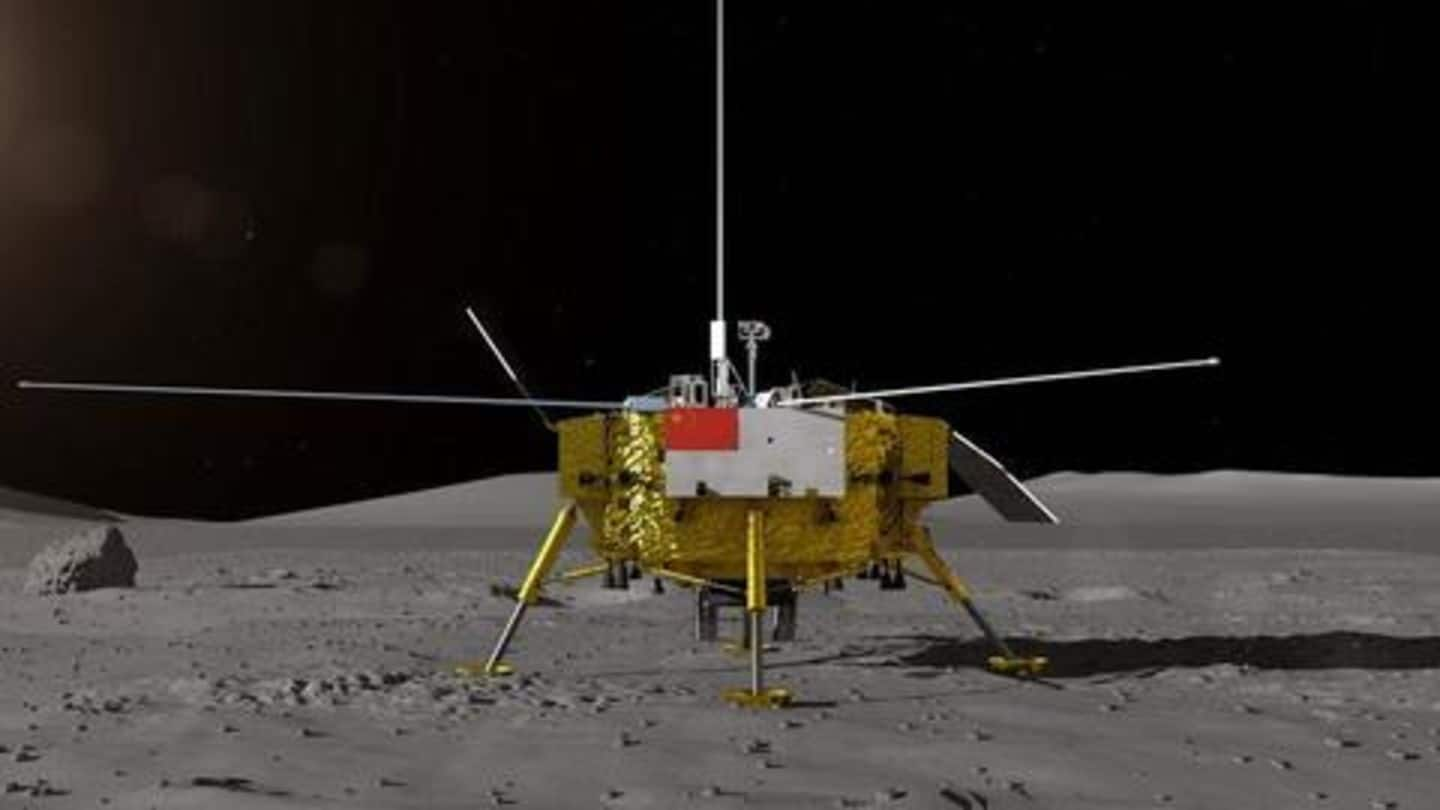
Chinese probe ready to explore dark side of the moon
What's the story
A month after it was launched, a Chinese space probe is all set to land on the dark side of the moon this week. While spacecraft have earlier seen the dark side of the moon, none have ever landed on it. Thus, if the Chinese probe, Chang'e-4, manages to make the landing, China will script history in space exploration. Here are the details.
Chang'e-4
After several delays, Chang'e-4 was launched earlier in December
Chang'e-4, named after the Chinese goddess of the moon, was originally slated to be launched in 2015. However, after several delays, the probe was launched on December 8 this year, and was carried into space by a Long March-3B rocket. Chang'e-4 entered the lunar orbit on December 12, and is slated to land on the dark side of the moon on Thursday, January 3.
Survey
Chang'e-4's rover will survey the lunar surface
The Chang'e-4 probe contains a lander, as well as a rover that can explore the lunar surface. Once the landing is made, China plans to use the rover to survey the moon's terrain and gather data on landform and mineral composition. A particular area of focus is the Aitken basin, which is one of the largest craters in the solar system.
Experiments
China also plans to conduct a vegetable-growing experiment
However, that's not all. Chang'e-4 is also carrying seeds for conducting an experiment in cultivating vegetables in a closed environment on the lunar surface. Further, it is also equipped with a panorama camera, and a plethora of measuring devices for measuring neutron radiation and neutral atoms on the dark side of the moon.
Dark side
The dark side of the moon has long fascinated humans
While humans have visited the near side, or the visible side of the moon multiple times, the dark side of the moon has long fascinated humanity. Owing to the moon being tidally locked to the Earth, we can only see one side of the moon i.e. the near side, while the dark side remains completely obscured from view.
Historical
A brief history of (manned and unmanned) lunar landings
For those unaware, the near side of the moon was reached by US astronauts between 1969 and 1976, while the Soviet Union achieved the feat in 1976. In 2013, China made its first landing on the near side using its Chang'e-3 probe.
Significance
Why the mission is of prime importance to China
Understandably, there's very little information about the dark side of the moon, and China could become the first nation to shed light on it. This would not only contribute to scientific research, but would also mark a major step in China's ambition to be at par with the US and Russia as space powers by 2030.
US
The US is suspicious of China's space ambitions
However, neither the US nor Russia have been impressed by China's ambitions to become a major space power by 2030. With China planning to commence the construction of its very own manned space station next year, Washington has alleged that Beijing's space program aims to prevent other nations from using space-based assets during times of crisis. Beijing, for its part, insists its intentions are completely peaceful.